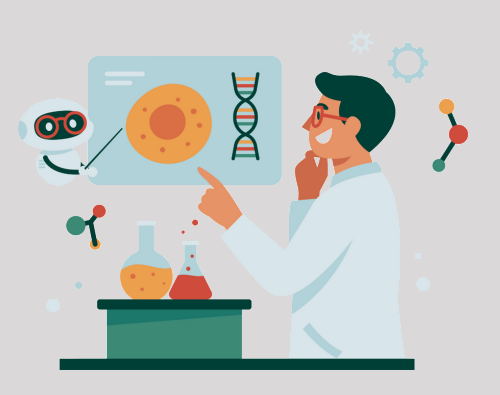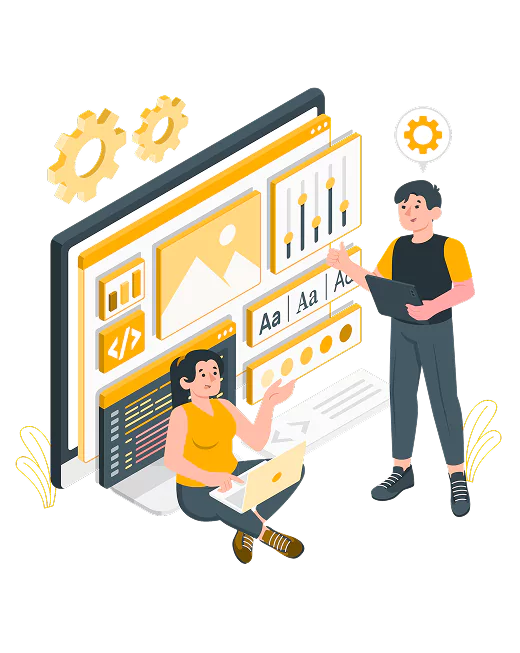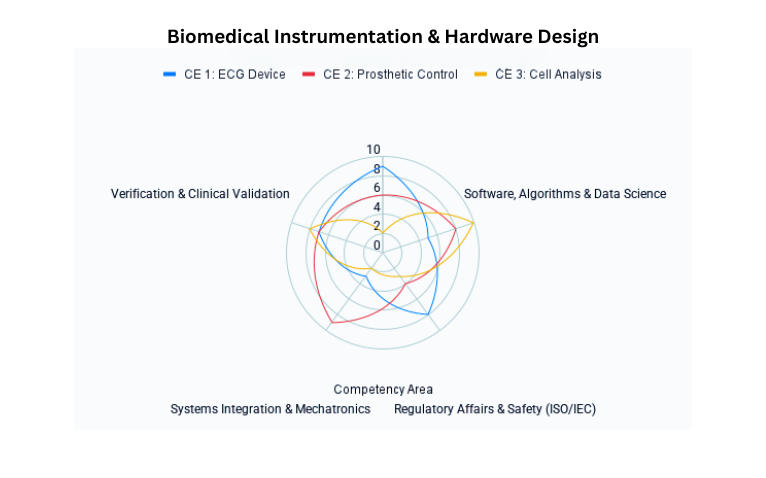CDR Sample for Bio-Medical Engineers (233913)
Our expert CDR writers are here to guide you in crafting a Competency Demonstration Report that maximises your chances of a positive skills assessment from Engineers Australia for the Biomedical Engineer occupation.

At a Glance: Your Path to a Successful Assessment
Mechanical Engineer CDR Sample (ANZSCO 233512)
- Success-Focused Content: This page outlines a complete CDR structure, meticulously designed to demonstrate the competencies required for the Bio-medical Engineer occupation (ANZSCO 233913).
- Three Core Career Episodes: We have featured projects in high-demand biomedical fields, including prosthetic control systems, medical device design, and diagnostic imaging analysis.
- Key Technologies Covered: Our samples highlight expertise in industry-standard software like MATLAB/Simulink and SolidWorks, alongside critical knowledge of medical device standards (IEC 60601, ISO 13485) and biosignal processing.
- Start Your Assessment: Review the detailed samples below, chat with our experts, and get a free consultation to begin your migration journey.
A Brief Overview of Bio-Medical Engineers (233913)
Biomedical engineers bridge the gap between engineering and medicine. From applying engineering principles and designing and developing innovative solutions in healthcare to creating, testing, and maintaining diagnostic equipment, medical devices, artificial organs, and advanced prosthetics, their work involves a deep understanding of human physiology, biocompatible materials, and data analysis to improve patient outcomes and advance medical technology. As a highly sought-after specialisation in Australia, a compelling CDR is essential for a successful skills assessment.
Bio-Medical Engineers Career Episode Report Samples
A successful Competency Demonstration Report for a Biomedical Engineer must include three Career Episodes, a Continuing Professional Development (CPD) report, a Summary Statement, and a Curriculum Vitae. Our samples are structured as follows:

Curriculum Vitae
A professional CV prepared using an engineering-specific template that highlights your key projects and capabilities in the biomedical field.
Continuing Professional Development (CPD)
A detailed report (approx. 1000 words) showcasing your commitment to staying current with the latest advancements in medical technology and regulations.
Civil Engineer Career Episode Report Sample – 1
"Structural Design and Analysis of a Multi-Storey Commercial Building" (1800 words).
Bio-Medical Engineer Career Episode Report Sample – 1
"Design and Development of a Low-Cost, Portable ECG Monitoring Device" (approx. 1900 words).
Bio-Medical Engineer Career Episode Report Sample – 2
"Development of a Myoelectric Control System for a Prosthetic Hand" (approx. 1800 words).
Bio-Medical Engineer Career Episode Report Sample – 3
"Automated Cell Counting and Analysis Using Digital Image Processing" (approx. 1700 words).
Bio-Medical Engineer Summary Statement Sample
A meticulous cross-reference of your project paragraphs to the specific competency elements required by Engineers Australia.
Bio-Medical Engineers Career Episode Report Samples
Each career episode is written in the first person, detailing technical challenges and the engineering solutions you personally developed. Paragraphs are systematically numbered for easy cross-referencing in the Summary Statement (e.g., CE 1, para 1.1, 1.2, etc.).
Project Title: Design and Development of a Low-Cost, Portable ECG Monitoring Device
This is my final year project focused on creating an accessible cardiac monitoring solution. My core responsibilities were:
I was responsible for the end-to-end design of a portable ECG device. I began by defining the system requirements based on clinical needs for remote patient monitoring. I designed the analog front-end circuit. It included a bio-instrumentation amplifier and advanced filters. It was instrumental in removing noise from the raw ECG signal. A critical task was ensuring that the design was compliant with the medical electrical equipment safety IEC 60601 standard. I created the PCB layout in Altium Designer and developed embedded C++ firmware for the microcontroller to digitise the signal and transmit it wirelessly to a mobile application. Finally, I validated the device’s accuracy by testing it against the certified medical-grade ECG machine.
- Skills & Technologies Demonstrated:
- Software: MATLAB/Simulink (for signal processing), Altium Designer, Embedded C++, Python.
- Standards & Frameworks: IEC 60601 (Medical Safety), ISO 13485 (QMS), IoT Protocols (MQTT, Bluetooth LE).
- Competencies: Biopotential Amplification, Analog & Digital Signal Processing, PCB Design for Medical Devices, Embedded Systems, Validation & Verification.
Project Title: Development of a Myoelectric Control System for a Prosthetic Hand
This research project aimed to create an intuitive control system for an advanced prosthetic limb. My key duties included:
I developed a control system that translates electromyography (EMG) signals from a user’s forearm into complex hand movements. My first task was to design the data acquisition hardware to capture and condition the weak EMG biosignals. The core of my work involved developing a pattern recognition algorithm in MATLAB. I used machine learning techniques to train the system to recognise different muscle activation patterns and map them to specific prosthetic hand gestures (e.g., open, close, pinch). A significant challenge was implementing this algorithm in a real-time embedded system to ensure instantaneous response. I integrated the system with a mechanical prosthetic hand and conducted extensive testing with users to fine-tune the performance and accuracy.
- Skills & Technologies Demonstrated:
- Software: MATLAB, Simulink, Python (Scikit-learn, TensorFlow), SolidWorks.
- Standards & Frameworks: Real-Time Operating Systems (RTOS), Human-Machine Interface Design Principles.
- Competencies: EMG Signal Processing, Machine Learning, Pattern Recognition, Real-Time Control Systems, Mechatronics Integration, System Validation.
Project Title: Automated Cell Counting and Analysis Using Digital Image Processing
This project focused on developing a software tool to automate a time-consuming laboratory process. My role involved:
I was tasked with creating an algorithm to automatically count and analyse cells from microscope images. I developed the entire image processing pipeline using MATLAB and Python with OpenCV. This involved implementing pre-processing steps like noise reduction and contrast enhancement, followed by a sophisticated image segmentation algorithm to accurately identify and separate individual cells, even in dense clusters. Finally, I extracted key morphological features, which are size, shape, and intensity, from each detected cell. The system’s accuracy was rigorously validated by comparing its automated counts against manual counts performed by a team of biologists, achieving over 98% correlation.
- Skills & Technologies Demonstrated:
- Software: MATLAB (Image Processing Toolbox), Python (OpenCV, Scikit-image), ImageJ.
- Standards & Frameworks: GxP (Good Practice) quality guidelines, Statistical Analysis Methods (e.g., Bland-Altman plot).
- Competencies: Digital Image Processing, Algorithm Development, Machine Learning for Classification, Software Validation, Statistical Analysis, Feature Extraction.
Proof of Our Reliability: Positive Skill Assessment
Every part of our CDR—the career episodes, the CPD, and the summary statement—is meticulously crafted to achieve one goal: a positive outcome letter from Engineers Australia, just like the one you see here for a Biomedical Engineer (ANZSCO 233913). This letter is the key that unlocks your skilled migration journey.
Check Out More CDR Report Samples
These are the recently approved CDR report samples prepared by our expert CDR report writers.
Bio-Medical Engineers (233913)
Telecommunications Engineer (263311)
Why Trust Us?
Learn more about our commitment to quality on our About Us page.

Latest Version
All our samples are up-to-date and maintain the recent EA and ACS guidelines.

Original Content
Each sample is unique and written from scratch by our report-writing experts.

Positive Results
We have garnered accolades from clients due to our results-driven approach.

Format & Structure
Our team meticulously follows the authorities' formatting and structuring guidelines.
GET FREE CDR CONSULTATION
Pricing Guide for CDR Writing
More than 7845 People Signed Up for our Writing Guidance! Are You NEXT?
I received great advice from CER Writers during my CDR submission. They addressed all of my inquiries and produced an excellent career episode report Engineers Australia template that complied with all specifications. My skills assessment was accepted on my first attempt and received positive outcomes.




I am very thankful and happy with TheCDRWriter; their personalised approach and expert advice were flawless. I received positive outcomes from EA on the first attempt.